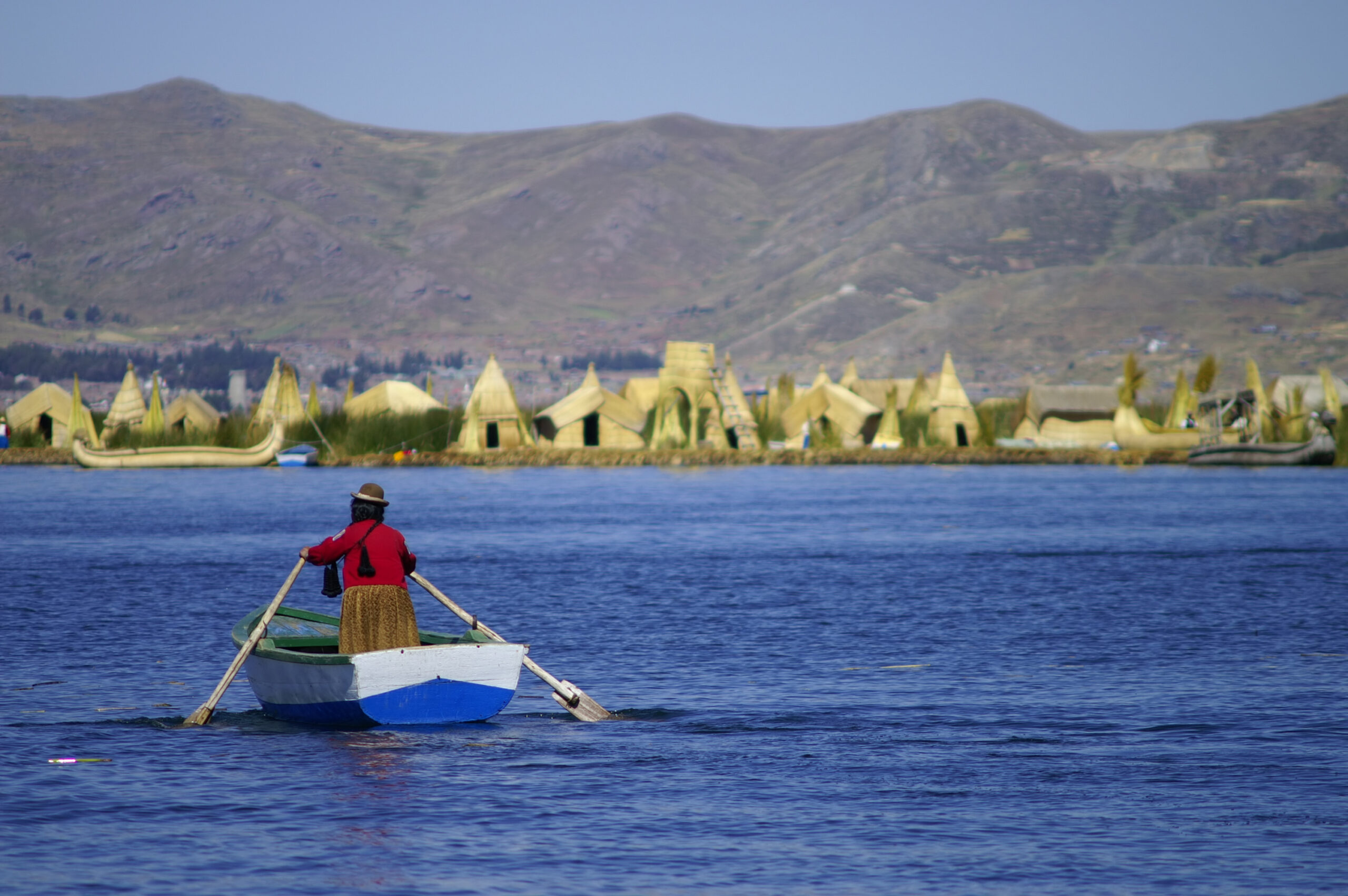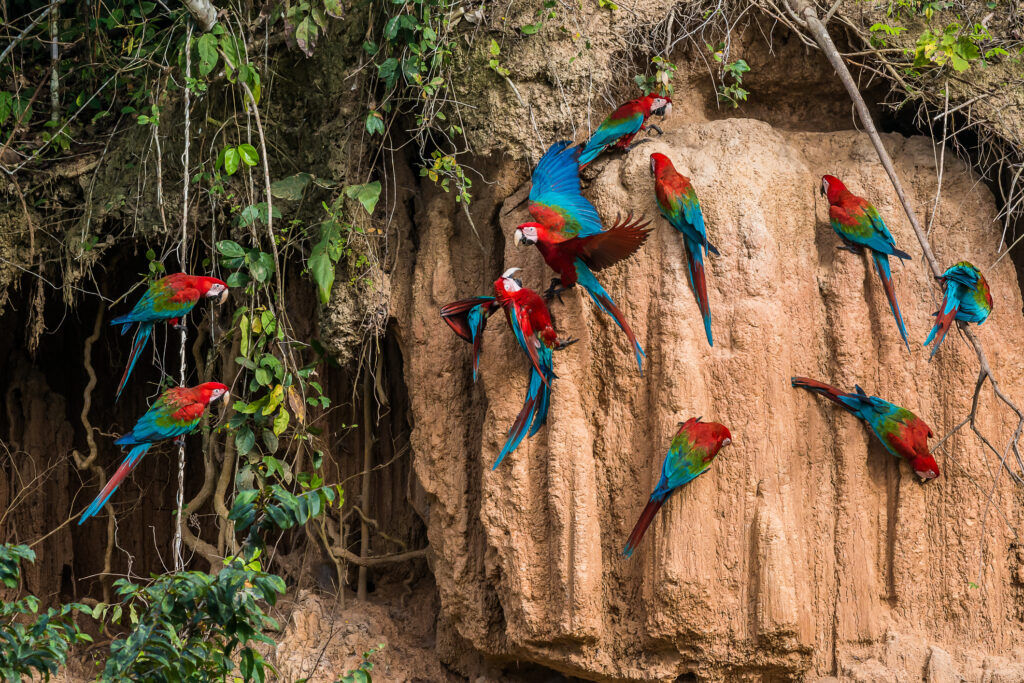
Peru
 Photo: Getty Images/iStockphoto
Photo: Getty Images/iStockphoto
Peru has the fourth largest tropical forest and is one of the most biodiverse countries in the world. About one-tenth of the world’s plant species are found here. The Peruvian Amazon is larger than the size of France. Only Brazil holds a larger share of Amazonian tropical forest.
Between 2001 and 2018, Peru lost a forested area approximately half the size of the Netherlands. Deforestation reached a peak during the pandemic in 2020, when more than 200 000 hectares of forests were lost.
Breathtaking Biodiversity
Peru is among the top 20 most mega-diverse countries in the world. The 36 ecosystems found in the country are home to over 25,000 protected species of plants and animals, and over 4000 marine species.
Much of its environmental richness is found in the tropical forests. Peru holds the largest diversity of butterflies in the world and ranks 3rd in number of bird species.
- Size: 1.3 million km2
- Capital: Lima
- Population: ca 32 million
- Ethnic groups: 55 indigenous groups, with a population of 4 million people
- Forested area: 680.000 km2 – more than 50% of the country
- Biodiversity: Peru is part of the 17 most diverse countries in the world and has the second largest Amazon forest on the planet, which combined make up 70% of the planet’s total biodiversity.
Peru is among the top 20 most mega-diverse countries in the world.
The 36 ecosystems found in the country are home to over 25,000 protected species of plants and animals, and over 4000 marine species.
Much of its environmental richness is found in the tropical forests. Peru holds the largest diversity of butterflies in the world and ranks 3rd in number of bird species.

The Peruvian Amazon forests are home to almost 60 indigenous peoples. These peoples have immense ancestral knowledge and a rich cultural heritage, including almost 50 different languages.
Peru’s indigenous peoples play a central role in forest conservation. Several tribes in the Peruvian forests live in voluntary isolation. Peru has established five indigenous reserves for uncontacted indigenous people and two territorial reserves covering an area of over 4 million hectares.
However, in many areas indigenous lands and reserves are under threat from outside actors, such as illegal loggers. According to Global Witness, at least 51 environmental defenders – half of them indigenous- were killed in Peru between 2012 and 2021. The UN classifies indigenous communities and environmental defenders the group of human rights defenders most at risk in Peru.

In 2014, Peru, Germany and Norway signed a joint Declaration of Intent in support of Peru’s efforts to halt forest loss in the Peruvian Amazon. The objective was to reduce greenhouse gas emissions from deforestation and forest degradation, primarily by making the forest and agriculture sector carbon neutral and to expand protected areas and indigenous peoples’ reserves.
In 2021, this collaboration was extended, as the United Kingdom and USAID joined the partnership aiming to step up efforts to reduce deforestation in Peru’s Amazon rainforest by 2025.
Read the new Joint Declaration of Intent (2021) here.
Norway is committed to support Peru’s efforts with up to NOK 1800 million – more than USD 200 million, up to 2025. Of this, up to NOK 1500 million are payments for reduced deforestation, certified by the third-party standard Architecture for REDD+ Transactions.
Progress under the Partnership
In 2023, a financial mechanism for REDD+ payments for results was established in Peru, with Norwegian assistance.
Important progress has been made on the expansion of protected areas and indigenous reserves and putting in place important policy and monitoring instruments.
Some of the key the Yavarí Tapiche reserve for uncontacted and vulnerable indigenous groups deep in the Amazon rainforest. The area expands to approximately 1,100,000 hectares, equivalent to the size of Jamaica.
(II) Peru established a new, stunning national park in 2015 in Peru’s Amazon forest and along the border with Brazil – Sierra del Divisor. This national park spans 1,300,000 hectares of largely primary forest and contains unique wildlife habitat and uncontacted indigenous communities.
(III) Peru, through its National Program of Forest Conservation, has entered into forest conservation agreements with indigenous communities covering 2,900,000 hectares.
(IV) Peru has granted forest titles to indigenous communities covering more than 1,900,000 hectares. Indigenous peoples play an important role in protecting Peru’s forests and play an active role in implementing the Joint Declaration of Intent.
(V) Peru has granted rights to more than 5,600,000 hectares of forests through the establishment of new natural protected areas and regional conservation areas. Peru also made progress in establishing a public cadastral system for land titles, and in implementing policies on zoning, land-use planning, forest management and allocation of rights to forest resources.
(VI) Peru increased its ambition to reduce emissions under the Paris Agreement in December 2020.
Drivers of deforestation
The drivers of deforestation and forest degradation in the Peruvian Amazon include small-scale agricultural expansion from migration from the Andes region, land speculation, legal or illegal logging, and illegal activities such as mining and coca production.
During 2008-2021, most of the deforestation occurred on lands without clearly defined rights. Most deforestation occurs on less than 5 hectares and is associated with agriculture practiced by small and medium-sized smallholders.
Underlying causes include weak governance, corruption, poverty, migration, insufficient land use planning, low agricultural productivity and little access to credit for small farmers, as well as the low perceived economic value of the forest.
Deforestation in Peru has in the last years been concentrated in a few regions; particularly in Madre de Dios, Loreto and Ucayali.
To deal with these challenges, and to counter looming future threats of conversion of forests to large-scale agriculture, Peru has committed to set of policies to lead to a transformational change in terms of land use in the Amazon, including low carbon agriculture and sustainable forestry.

